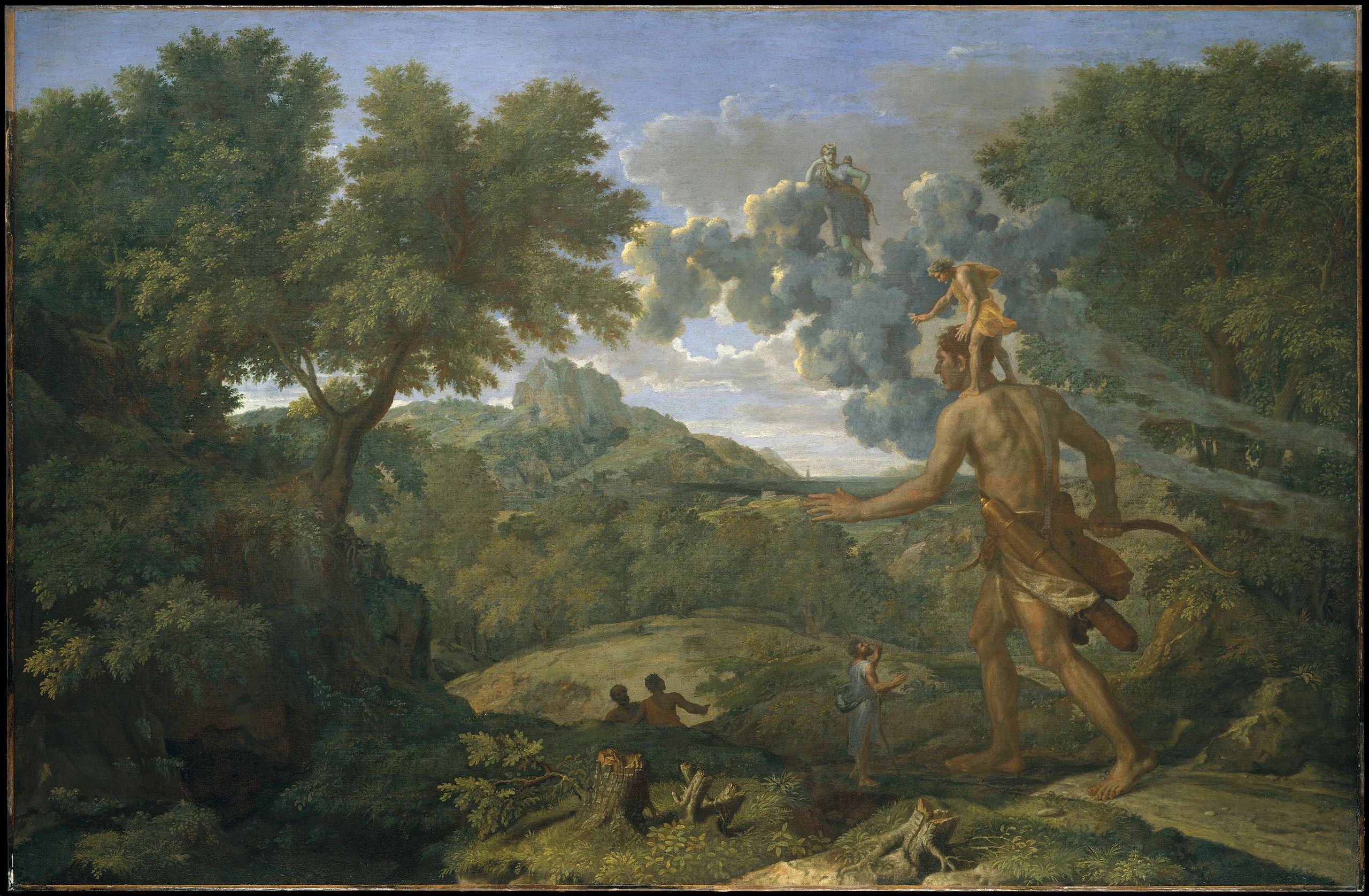It is fair to say that science today would not exist without unpaid labor.
In the academy today, we are more aware than ever that knowledge production is a collective process. Research is often collaborative, sometimes interdisciplinary, and is likely to be published in reports authored by more than one person. Behind the scenes, undergraduate and graduate assistants often contribute—though are not often enough acknowledged. Perhaps even more hidden is the work done by editorial staff members and peer-reviewers, who often profoundly influence the published research we read and on which we build.
The “we” who “stand on the shoulders of giants” is a collective “we,” not an aggregation of many “I”s—as in “I, like you, stand on the shoulders of giants.” The “I” cannot so easily be made autonomous, and the giants who support us proliferate.

Cedalion standing on the shoulders of Orion from Blind Orion Searching for the Rising Sun by Nicolas Poussin, 1658, Oil on canvas; 46 7/8 x 72 in. (119.1 x 182.9 cm), Metropolitan Museum of Art.
What the professions have not begun to acknowledge in any meaningful way is how much of this research is completely dependent upon unpaid labor.
I think it’s reasonable to presume that we haven’t a clue just how much published research is authored by adjuncts and other contingent faculty who are not paid for research. That professional associations and academic journals do not have this information on hand—let alone foreground it in their annual reports—shows that the concern about unpaid research does not often register. The level of concern is certainly unequal to the amount of unpaid research our professions rely upon.
Most of us teach far more than our tenure-stream peers, who are explicitly paid for and are expected to do research. A typical expected distribution of work for tenure-stream faculty at a research university is 40% teaching, 40% research, and 20% service. For contingent teaching staff, most of us are paid only for teaching, and we do a lot more of it relative to our tenure-stream peers. If we are full-time and on a 9-month contract, we may be paid for service work, but this is usually exclusive to service to students and perhaps also to the department.
Service to the profession is another area where crucial yet unpaid labor remains unacknowledged.
Service to the profession is another area where crucial yet unpaid labor remains unacknowledged. Journal editorial and advisory boards are increasingly staffed by contingent faculty and others who are not paid for service to the profession. Many of us peer-review articles for journal, not receiving any compensation from our employers for this work.
It is fair to say that science today would not exist without unpaid labor. This is an aspect of adjunctification that is barely mentioned.
Journals should include an acknowledgement on every article they publish indicating its publication depended on unpaid labor.
Perhaps that is because the research and service work contingent faculty so often perform is not only unpaid, but unappreciated. This is unlikely a mere oversight. The phrase “two-tier system” is suggestive, and the culture of our professions show that this is not merely about job descriptions or bureaucratic categories. Tenure-stream faculty often treat one another as though they are academics at a higher level of quality than their contingent counterparts. This is part of the justification of the hyperexploitation of adjunct labor: if we were good enough to be in the tenure-stream, we’d be there already.
In addition to being hyperexploited, we are marginalized in our own professions—we’re on a different “tier.” It’s remarkable that, in professions where we are more than anywhere else likely to see meritocracy as a myth, the culture that sustains the two-tier system seems completely dependent on that myth. If the unpaid research and service to the profession were made plain and if the extent of its use measured and reported, this cultural basis for the two-tier system would be proven groundless.
Journals should include an acknowledgement on article they publish indicating when their publication depended on unpaid labor. It is a responsible thing for journals to do and it would contribute to broader struggles against the exploitation of adjunct and other contingent faculty labor.


But journals themselves rely on unpaid labor in the form of peer reviewers. While I agree they *should* include statements of compensation (perhaps dollar amounts?), it is unlikely that they will, given that their entire business model relies on labor exploitation.
Peter, tenure-stream faculty are paid for service to the profession, which includes things like serving on a journal advisory board, peer-reviewing research, and reviewing tenure files for faculty at other institutions.